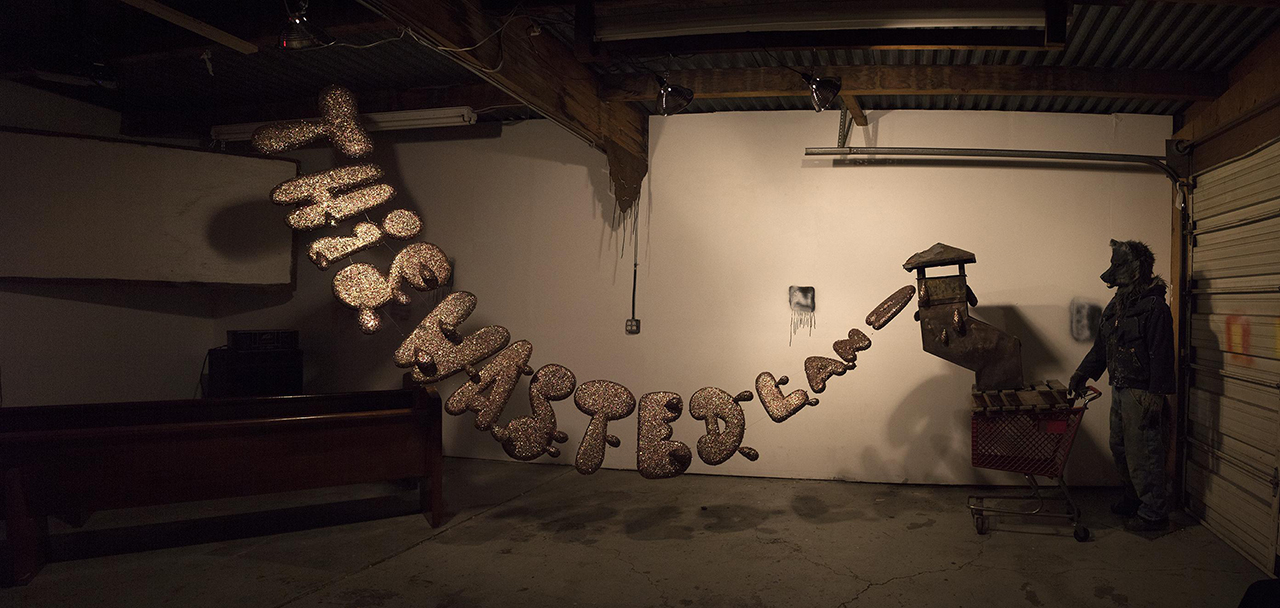
The word sideshow comes up several times in conversation when discussing the traveling installation centered on Andrew H. Shirley’s Wastedland 2 film. The touring exhibition is as much of a whirlwind as the artist himself, connecting collaborators from across the country in an ever-evolving project.
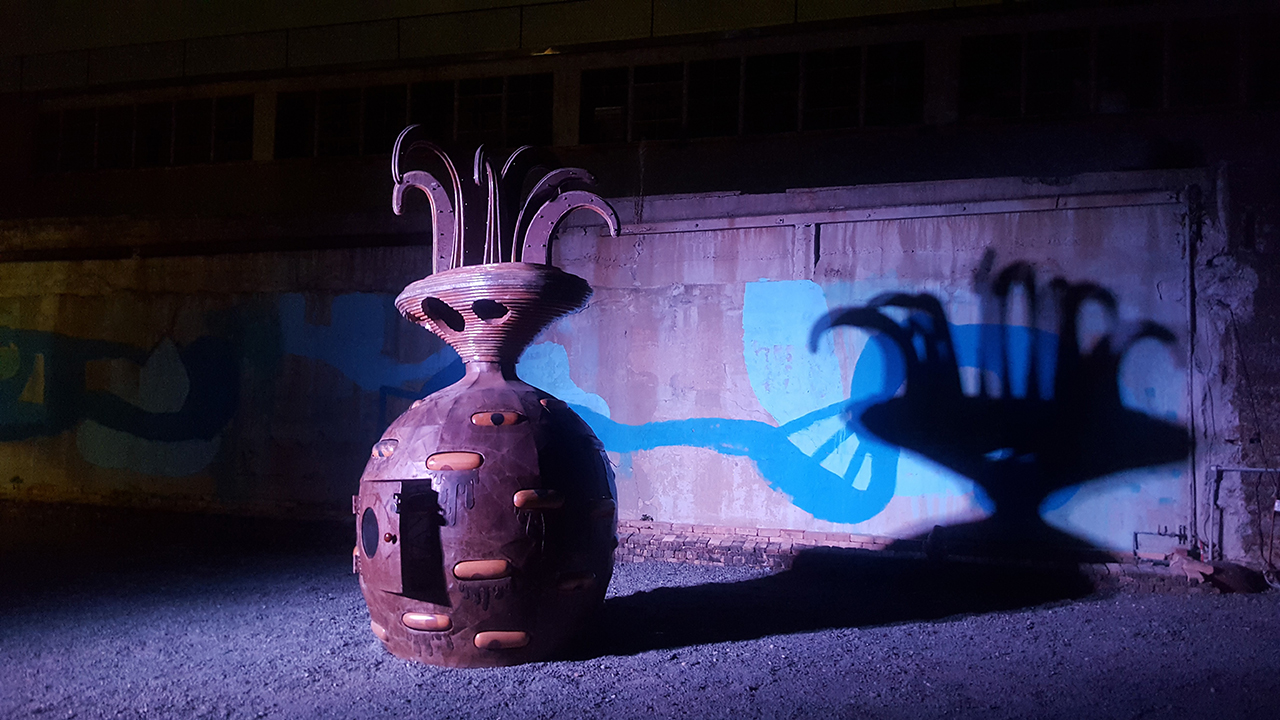
While the upcoming screening of Wastedland 2 this Friday at Superchief Gallery is the first screening with an emphasis on audience participation through costumes, the film had previously shown in New York City at the Knockdown Center. At this venue, from the moment I stepped into the installation it felt like a family reunion, a theme that is echoed throughout the film. It was a feeling I couldn’t quite put my finger on, and decided it was probably all the personal connections I had with the people and left it at that. However, when I went to interview Andrew, I had to ask if he could illuminate why even people I knew who were not personally familiar with the crews involved still came away with this sense of kinship. Shirley explained, “In many ways Wastedland 2 created not only a new platform of film exhibition, but perhaps exemplified the idea of collaborative action and support from a community that is sometimes over looked as far as how genuinely loyal and generous they are. The graffiti community not only looks out for each other, but they are a family that looks out for people in need- in many ways.” From assisting in the entry of buildings to a floor to call a safe home for the night, the filmmaker was quick to name all of the people and places who helped him out. It may not have been a direct connection, but maybe a friend of a friend, because as he stated they are the family that always looks out for one another.
Beyond these overarching themes, I was curious about how the process varied city to city, having only attended the Knockdown Center screening myself.
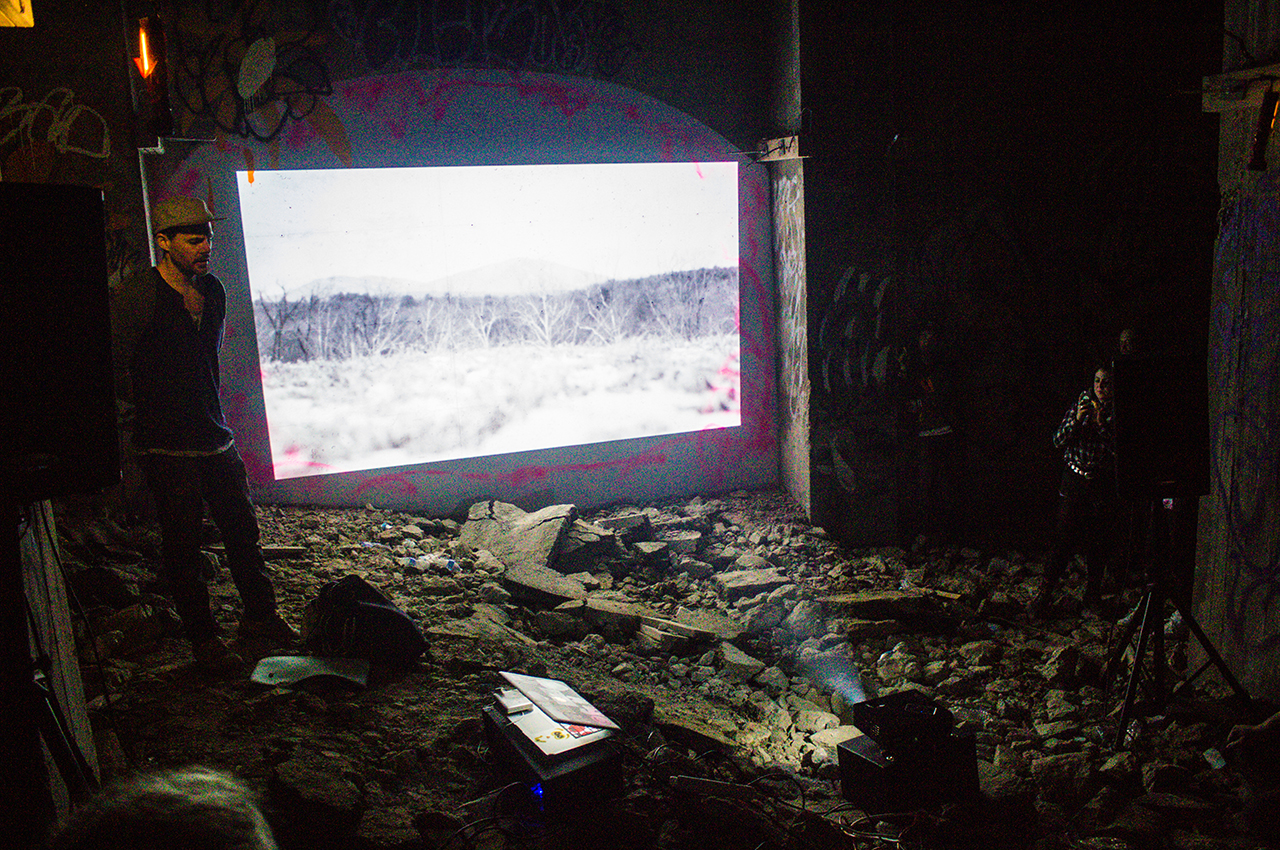
Rhiannon Platt: How did this tour begin?
Andrew H. Shirley: Crispen Glover’s films had a huge impact on me- most notably his touring ethic and how important he believes in being at each of his screenings, interacting with the audience with a q&a, and his infamous slideshows. Like a chef serving you your food- Glover’s presence at his shows added a great insight and immersive feeling to the screening. I had previously toured the country making art, but never shared it in this kind of platform – a circus sideshow of sorts- incorporating different artists and acts local to each space. Despite having shown my work for some years now around the world, as a Psychotronic Filmmaker, film festivals rarely respond well to my work. I knew I could make a bigger impact, create an archival legacy of press, and basically bugout harder if I took the show on the road myself. From the first days of shooting Wastedland 2, I sent out stills to galleries and spaces I had previously shown work at, with hopes of touring the country. I attempted to schedule screenings and events alongside the moon calendar and other cultural activities taking place around North America before the film was even done being edited. Ultimately, I didn’t depend on a film circuit or traditional film viewing format to exhibit- I created my own.
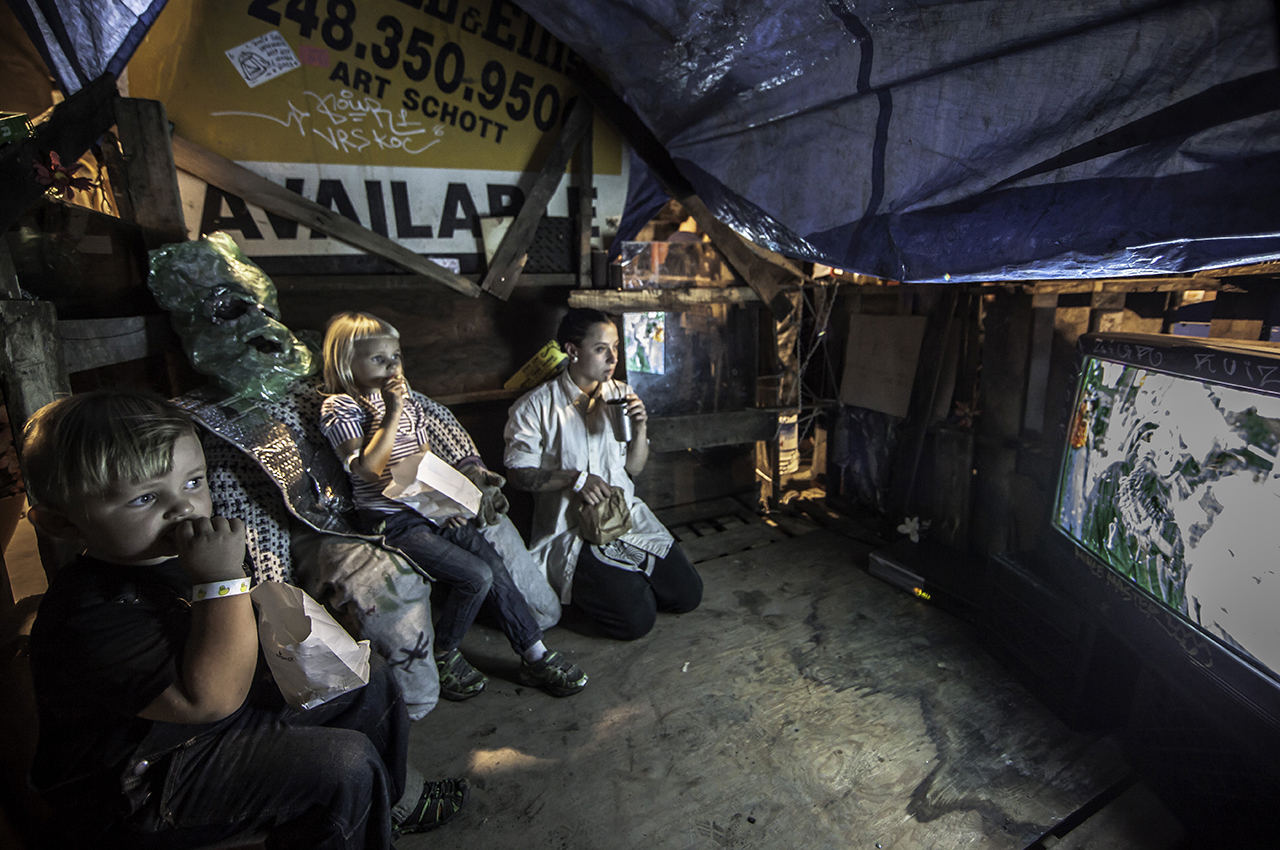
RP: Speaking of tour locations, how did the physical location of each installation change how the work was presented? It seems to organically change from place to place, kind of like an amoeba.
AS: Make Art Work, in Detroit, (a huge industrial car factory turned recycling center turned art space) ended up setting the standard for the rest of the tour as far as what I envisioned the aesthetic of Wastedland 2 exhibition, a tortured psyche transcending loneliness, neglect, and confusion. We had other spaces for screenings that did this perfectly. For example, Jacqueline Danger’s uninhibited breaking and entering into a Kansas City bridge provided something like an ancient coliseum (painted by members from Kansas City’s H8U crew). In West Oakland, friends from Young Rectums and BKF helped arrange a screening inside a train yard where we projected the film on the side of a freight train and had several live performances with the help of a stolen generator. The entire exhibition traveled in a 15-foot truck, and as there was a large body of works to choose from, no two shows displayed the same line up. The size and shape of the space dictated where some of the larger pieces could and could not go, and really a lot was up to how willing the people managing the spaces were in letting us destroy or augment their space. In addition to 907 crew, in each city we were very lucky to be greeted by different artists, vandals, and magicians who navigated the visual outcome of the show with their own aesthetics and, most of the time, the materials we needed depended on the lengths we were willing to go to get them. Needless to say, this all brought about many great misadventures and some close calls with trouble.
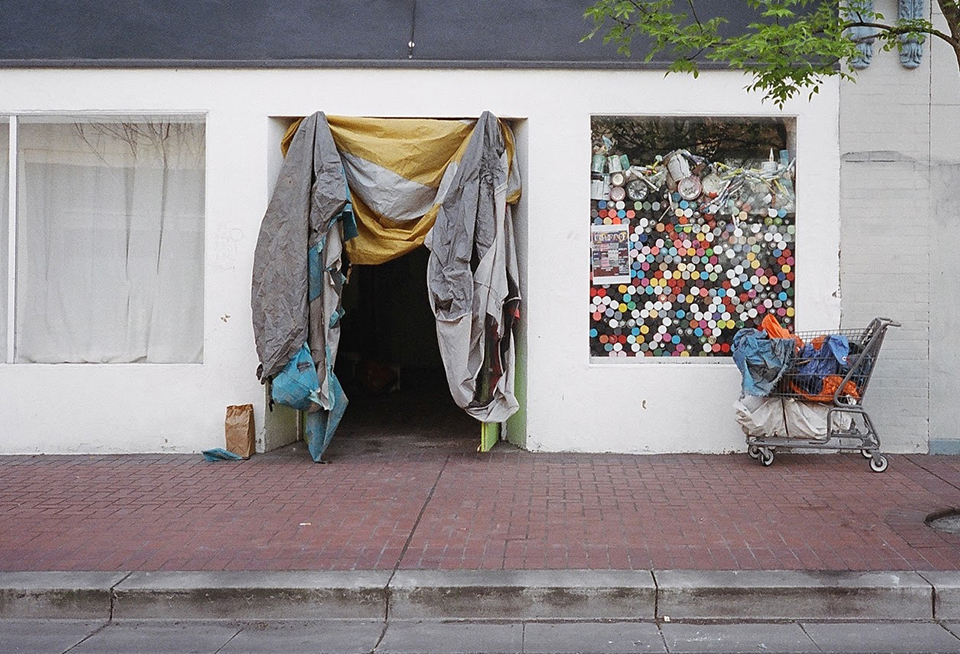
RP: As things do change, what can people expect to be different for the show at Superchief Gallery?
AS: The Superchief show falls around the time of my favorite holiday- Halloween. Ed Zipco had the idea of doing a masquerade- something I have been waiting to do with the show all year. The install will be scaled down, but there will be a whole new cast of characters in the exhibit- crazy New Yorkers in masks on drugs and partying. Combine this with new paintings from 907 crew, films by the L.E.S’s infamous DUKE PAPI and live performances and tattooing- it’s really going to come off as a pretty far out psychedelic circus- I am sure.
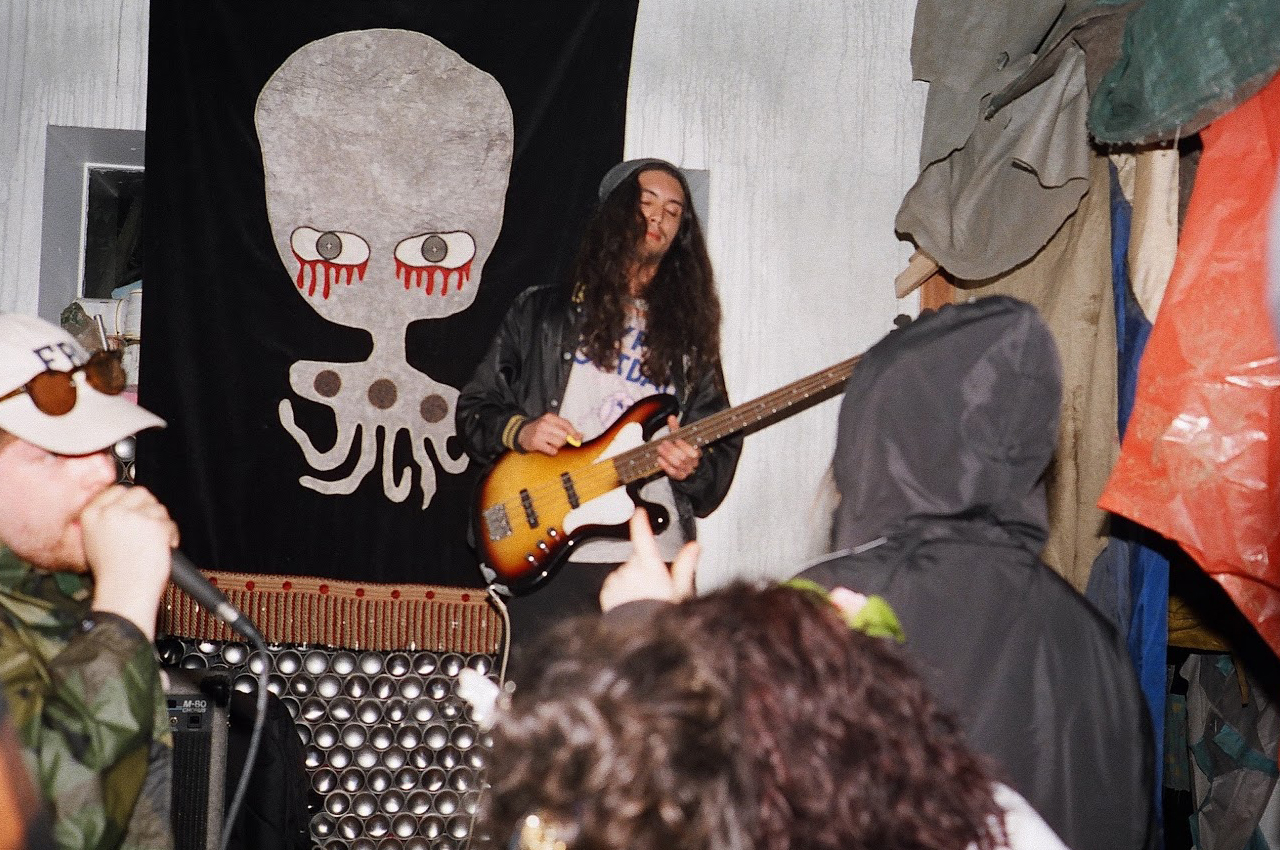
Superchief Masquerade Party
Friday October 27th
Doors at 7pm – Film screens at 9pm / 11pm alongside mini-installations by AMY SMALLS / EKG / GREG HENDERSON/ WOLFTITS (and more) and new paintings by NOXER / RAMBO / UFO907.
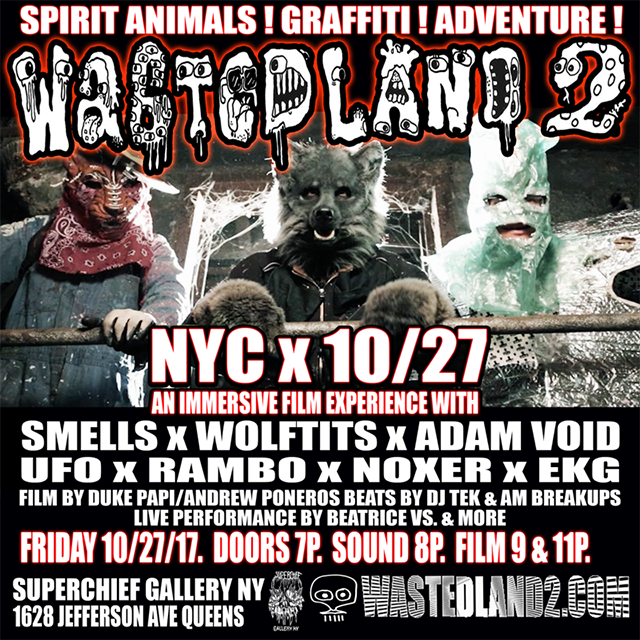
Photos by Alisha Funkhouser, Jaime Jarvis, Jacquline Danger, Phil Connors, and Daniel Kruse.
